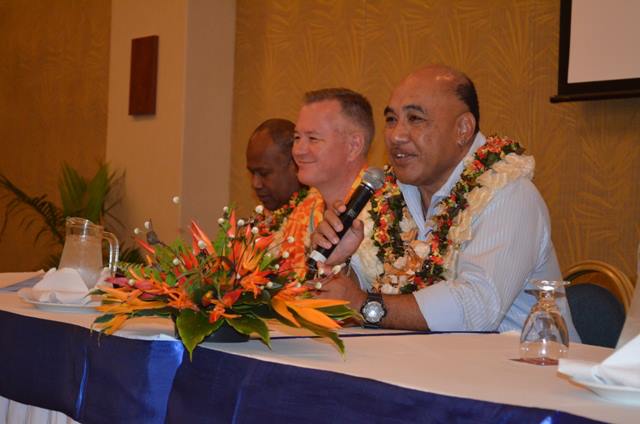
Climate Change Resilience
5 July 2013, Nadi, Fiji - Building a National Disaster Management Office (NDMO) is a step forward for the tiny island of Niue in its efforts to address climate change issues.
Niue's Secretary to Government, Richard Hipa, said their disaster office work was looked after by the Department of Police.

He led Niue's delegation to this week's 4th Pacific Climate Change Roundtable (PCCR) 2013 in Nadi, Fiji. He is the former chair of PCCR.
"We are establishing a NDMO office which we do not have at the moment. We are going to have a stand-alone office. We already have the design for the office and job descriptions. We have very limited capacity, and the new office will accelerate our climate change and disaster risk programmes and ease our work loads," he said.
Hipa said members of their Disaster Management Council have their own full time jobs but they stretch their responsibilities to also deal with climate change issues and cyclone season preparations.
"Now the NDMO will execute their roles and we hope to amalgamate all climate change related programmes under one roof."
Hipa also talked about Niue's joint National Action Plan on Climate Change Adaptation and Disaster Risk Management with the inclusion of earthquakes, tsunami, and droughts whereas before it was only based largely on cyclones.
"This plan is a proactive response to reducing the risk of climate variability and the long term effects of climate change. This plan provides the basis for Adaptation initiatives including disaster risk responses in a more integrated and coordinated approach," he said.
Hipa also emphasised the importance of an upgraded early warning system, acquiring funds for programmes and building capacity and good infrastructure.
"The Government of Niue based on the experience of cyclone Heta in 2004, has invested in public infrastructure where key utilities like water, telecommunication and power cabling are placed underground and reticulated to every home."
Hipa said a post survey for cyclone Heta revealed that storm waves overtook the 20 meter cliffs of Niue, sweeping hundreds of meters inland damaging everything in its way.
"A project to install a water tank for each home is also in the pipeline and Government has approved another project for waterfall catchment installation. This will enable us to collect rain water."
Niue's Secretary to Government, Richard Hipa, said their disaster office work was looked after by the Department of Police.

He led Niue's delegation to this week's 4th Pacific Climate Change Roundtable (PCCR) 2013 in Nadi, Fiji. He is the former chair of PCCR.
"We are establishing a NDMO office which we do not have at the moment. We are going to have a stand-alone office. We already have the design for the office and job descriptions. We have very limited capacity, and the new office will accelerate our climate change and disaster risk programmes and ease our work loads," he said.
Hipa said members of their Disaster Management Council have their own full time jobs but they stretch their responsibilities to also deal with climate change issues and cyclone season preparations.
"Now the NDMO will execute their roles and we hope to amalgamate all climate change related programmes under one roof."
Hipa also talked about Niue's joint National Action Plan on Climate Change Adaptation and Disaster Risk Management with the inclusion of earthquakes, tsunami, and droughts whereas before it was only based largely on cyclones.
"This plan is a proactive response to reducing the risk of climate variability and the long term effects of climate change. This plan provides the basis for Adaptation initiatives including disaster risk responses in a more integrated and coordinated approach," he said.
Hipa also emphasised the importance of an upgraded early warning system, acquiring funds for programmes and building capacity and good infrastructure.
"The Government of Niue based on the experience of cyclone Heta in 2004, has invested in public infrastructure where key utilities like water, telecommunication and power cabling are placed underground and reticulated to every home."
Hipa said a post survey for cyclone Heta revealed that storm waves overtook the 20 meter cliffs of Niue, sweeping hundreds of meters inland damaging everything in its way.
"A project to install a water tank for each home is also in the pipeline and Government has approved another project for waterfall catchment installation. This will enable us to collect rain water."